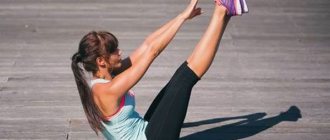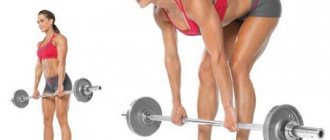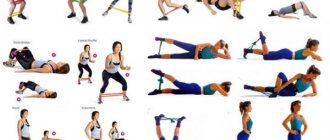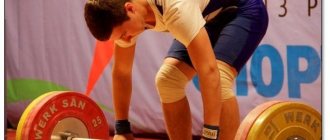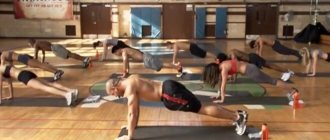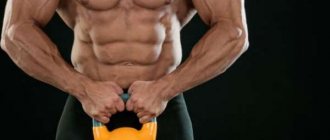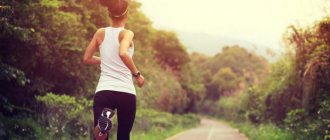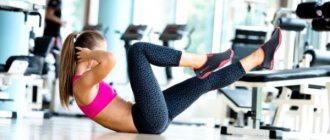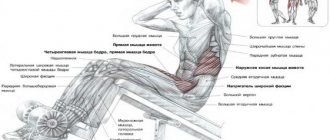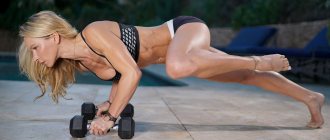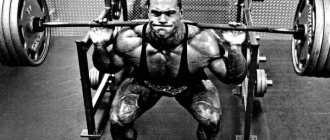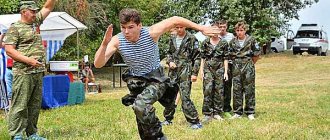What you can and should eat
Looking at the bodies of athletes, you understand that without daily work in the gym, you will not achieve this. There is a feeling of respect for a person who overcomes himself every day. But it’s not only hard training that gives such an enviable result. Athletes have to control their rest and nutrition regimen.
The condition and appearance of the body depends on the composition, quality and volume of food. Will the person have enough energy to work and exercise? Will the amount of food be such that the excess is stored as fat on the body? What is useful and what is harmful to eat for the life and functioning of the body? The athlete must understand these issues so that the results of training are not in vain.
A person requires 150 chemical compounds to meet the body's needs. To provide them, you need to consume up to 4000 kcal per day. With this amount of food, training will become impossible. Therefore, athletes’ diets should include healthy foods and dietary supplements.
The athlete’s nutrition, in addition to satisfying the feeling of hunger, must meet the following requirements:
- Provide the body with the necessary calories, vitamins, micro- and macroelements, nutrients;
- Contribute to the normalization of metabolic processes;
- Create an optimal hormonal background that ensures maximum physical performance;
- Help increase muscle growth and reduce fat.
Below are the general principles of proper sports nutrition. But we must not forget that athletes create an individual menu for themselves, based on physiology and the ultimate goals of training.
- We recommend reading: sports nutrition for losing weight and gaining muscle mass
The composition of sports nutrition corresponds to the following ratio: 60% carbohydrates, 30% proteins, 10% fats. Vegetarians also follow these proportions in their diet.
Carbohydrate products:
- Grain (oats, rye, amaranth, spelt, corn);
- Porridge (buckwheat, rice, millet);
- Non-starchy vegetables;
- Legumes;
- Sour fruits (apples, kiwi, lemon);
- Greens (parsley, dill, sorrel);
- Pasta from durum wheat;
- Their bread is wholemeal and bran;
- Nuts;
- Berries;
- Dried fruits;
- Honey;
- Vegetable natural juices.
Protein products needed by an athlete:
- Fish caught in a natural reservoir;
- Seafood;
- Lean meat (veal, poultry, rabbit);
- Eggs;
- Whey (included in the basic nutrition of athletes, as it is close to the composition of muscle tissue);
- Hard cheeses;
- Dairy and fermented milk products of natural origin (cottage cheese, yogurt, kefir).
Fat-containing products:
- Unrefined vegetable oils;
- Butter;
- Cream;
- Fatty fish;
- Unsalted lard.
Listed are the foods that you need to eat before training, competitions, for muscle growth, when cutting, to lose weight, for breakfast, lunch and dinner. Drinks you can drink include water, green tea, vegetable juices and herbal infusions. Foods that can be eaten occasionally are:
- Syrian sweets (halva), made from natural products;
- Honey does not increase blood glucose levels after consumption. You can make a honey-based drink and drink it two hours before training and two hours after it.
- Bitter chocolate;
- Halva “Vigor”, specially designed for athletes;
- Hemotagene, high carbohydrate supplement.
Athletes sometimes “sit dry.” This is a low-carb diet that is needed for muscle growth and fat burning. When cutting, carbohydrates are sharply limited in the diet, switching to protein nutrition. The trend of muscle growth attracts young athletes to use a body cutting program.
It is important to distinguish a diet for weight loss from a diet for cutting. When losing weight, one achieves a decrease in body weight; when cutting, one achieves muscle growth.
Homework will be checked by masters
In Sochi, professional trainers of sports schools have also begun to conduct free online training, the press service of the resort city reported.
“Mentors conduct video classes on a voluntary basis, as volunteers,” said Sergei Pilosyan, director of the Department of Physical Culture and Sports of the Sochi Administration. “We are grateful to all the coaches and athletes who joined such an important project. It’s nice that our residents take coronavirus prevention measures responsibly, stay at home and at the same time develop physically. Together we can overcome this difficult situation as quickly as possible.”
Video classes are available for both adults and young Sochi residents. For example, a pilot project for preschool children in judo continues to operate online. Training takes place in a game form for 20-30 minutes three times a week. As homework, students send video reports to their mentors with completed sports exercises. This helps trainers monitor the progress of classes and select individual loads.
Simple and accessible workouts have been developed for adults. They are designed for general strengthening of the body, taking into account age. As a rule, these are exercises and basic physical education.
Exercises can be found on the official page of the Department of Physical Culture and Sports of the city administration on Instagram.
What not to eat
You can't eat regular table salt, eat sea salt instead. The following should not be included in your daily diet:
- Canned foods;
- Sausages, frankfurters, small sausages;
- Industrially processed products;
- Alcohol;
- Spicy and fried foods;
- Sugar and sugar-containing products (yogurt, cheese, full-fat cottage cheese; lemonades, juices, baked goods);
- Fast food;
- Crackers, chips, sweet lemonades;
- Semi-finished products, juices from powder;
- Mayonnaise, ketchup, sour cream, fatty sauces.
What do they have for breakfast and dinner?
An athlete's daily regimen includes first breakfast, second breakfast, lunch, and dinner. In terms of calorie content, meals are related as follows: 30% + 10% + 40% + 20%. That is, the main meals are breakfast and lunch. The transition of an athlete to five meals a day increases the effectiveness of training by 10% and helps to increase muscle growth.
Sample athlete's daily menu:
- 400 grams of meat;
- 400 g cottage cheese;
- 4 eggs;
- 200 grams of bread;
- 600 grams of vegetables and fruits;
- 200 grams of porridge;
- 30 grams of oil.
Vegetarian athletes must adhere to the specified proportions, replacing meat with vegetable proteins based on legumes and green plants; you can add cottage cheese and cheese to the diet.
Many people complain that they don't want to eat before breakfast. This usually happens due to poor nutrition. You can eat until 18.00 in the evening. At this time, digestive hormones stop being produced, and growth hormones begin to work. Everything we eat after 18.00 remains in the stomach until the morning. In the morning we don’t want to eat, we feel nausea and fatigue, muscle weakness. We need to change our diet.
There is a rule of the carbohydrate-protein triangle, when the carbohydrate base of the triangle is on top and occurs in the first half of the day, and the protein apex occurs in the evening.
The metabolic rate is highest up to 12 hours. Therefore, breakfast is the most important meal of the day. During breakfast, you can allow yourself to eat a spoonful of honey or fruit. Breakfast should be prepared so that it is satisfying.
- Breakfast for muscle growth – 3 eggs, 2 slices of bread, apple, green tea;
- Breakfast to lose weight – low-fat cottage cheese, 3 eggs;
- Breakfast when drying – 150 grams of pink salmon, 200 grams of buckwheat porridge, tea with sugar.
An athlete's dinner should be light and consist of protein foods.
Low-fat cottage cheese in an amount of 200 grams is ideal. You can drink a protein shake. Protein promotes muscle growth and repair, which is what happens at night after a protein dinner. If you remove protein for dinner, the body will lack energy and the process of muscle breakdown will begin. Therefore, you need to be very responsible when choosing foods for dinner.
- Dinner for muscle growth – buckwheat porridge, green peas, sardine, apple, green tea;
- Dinner to lose weight – 200 grams of fish, vegetable salad of cucumber and cabbage;
- Dinner when drying - cottage cheese, dried fruits, protein shake.
Vegetarian athletes show athletic results that are not inferior to athletes with a regular diet. The main thing is that the need for protein is fully satisfied. Vegetarians who consume eggs and cottage cheese do not have to worry about nutrition.
Features of the technique
In order for the exercise with the simple name Good Morning (or Good Morning) to stimulate the work of the above muscle groups (hips, buttocks, back and abs), you should follow the recommendations:
- when performing movements, the gaze should always be directed forward, as can be seen in the video;
- since the effectiveness of Good morning does not lie in gaining weight, but in strengthening the back and increasing muscle strength, it is not recommended to use heavy weights;
- It is recommended to do Good Morning in combination with deadlifts, 2-3 sets each of 8-10 repetitions.
Diet before competition
The basic rule of nutrition for athletes before competitions is that you can eat load-appropriate carbohydrates not only for breakfast, lunch and dinner, but also distribute their daily intake among intermediate meals (fruits, juices, chocolate, cookies).
- If athletes participate in competitions with a short-term load (sprinting, jumping), before the competition it is advisable to consume mainly simple, easily digestible sugars - fruit juices and jellies;
- If athletes perform for a long time (game sports), then before competitions, along with simple sugars, complex carbohydrates (fiber, starch) can be included in the diet;
- If athletes participate in endurance exercise (marathon, weight lifting), then before competitions they can consume carbohydrate foods with a low glycemic index (vegetables).
What an athlete eats after a competition is much more important than what he eats before a competition. The ideal option is carbohydrates with a small addition of protein (for example, cottage cheese) so that the blood glucose level increases smoothly, without jumps.
Foods you shouldn't eat after a workout:
- Cheese, due to the large amount of salt;
- Prepared meat products (salami, bacon), due to the large amount of fat and salt;
- Instant cereals can contain a lot of sugar;
- Bread contains starch, which is quickly converted to sugar;
- Fruit juices contain a lot of sugar;
- Fried eggs can be high in fat;
- Milkshakes with fruit may contain large amounts of sugar;
- Raw vegetables, they are not able to restore the lack of energy.
The nutrition of athletes at the Rio 2016 Olympics was carefully developed by nutritionists. Olympians think of food as fuel for the body.
Corn flakes, orange juice, half a piece of fruit and a protein bar are the standard breakfast at the Olympics. For dinner, athletes preferred to restore carbohydrate reserves, which could be an egg, a thin piece of lean meat, or cottage cheese.
THESE ARTICLES WILL HELP YOU LOSE WEIGHT
Your feedback on the article:
( 1,027 ratings, average: 4.51 out of 5)
How to do "Good morning"?
The exercise seems quite simple to perform, but nevertheless it is important to remember a few simple rules:
- First of all, you need to learn how to squat correctly.
- Place the barbell on the back of the deltoid muscles to ensure a secure exercise. A high position of the barbell is also acceptable; in this case, the load on the hamstrings and lower back increases.
- Don't bend over until you're parallel to the floor or, worse, lower. It is enough to stop about 15 degrees above parallel.
- To start, use a weight that is 25% of what you do squats with, then gradually increase the load.
- Do not perform the exercise with straight legs. This will cause the barbell to move forward too much, which will create excessive pressure on the lower back.
The “Good Morning” exercise with a barbell is very similar in technique to squats:
- The beginning is similar to squats. Stand straight with your feet shoulder-width apart. Place the barbell on your shoulders, take a deep breath and tighten your abdominal muscles.
- Begin to push your hips back, slightly bending your knees. Continue to push your hips back, lowering your torso until it is almost parallel to the floor. At the bottom, your shins should remain perpendicular to the floor and your knees should be slightly bent.
- Slowly bring your hips forward and lift your body. So you said “Good morning” to the gym.
The exercise is quite simple to perform, but it is better at first, if you are practicing on your own, to film the technique on video so that you can analyze the errors.
